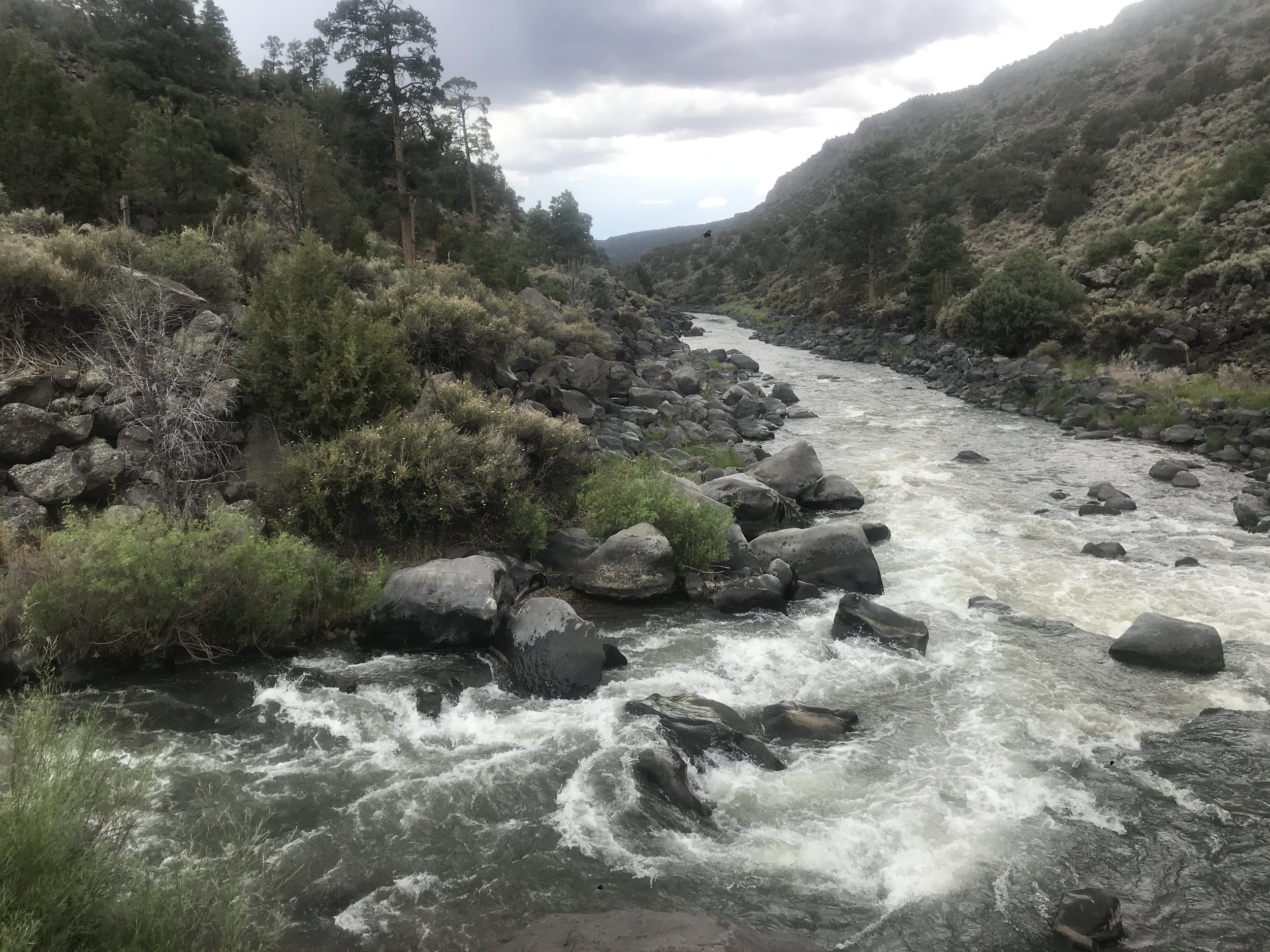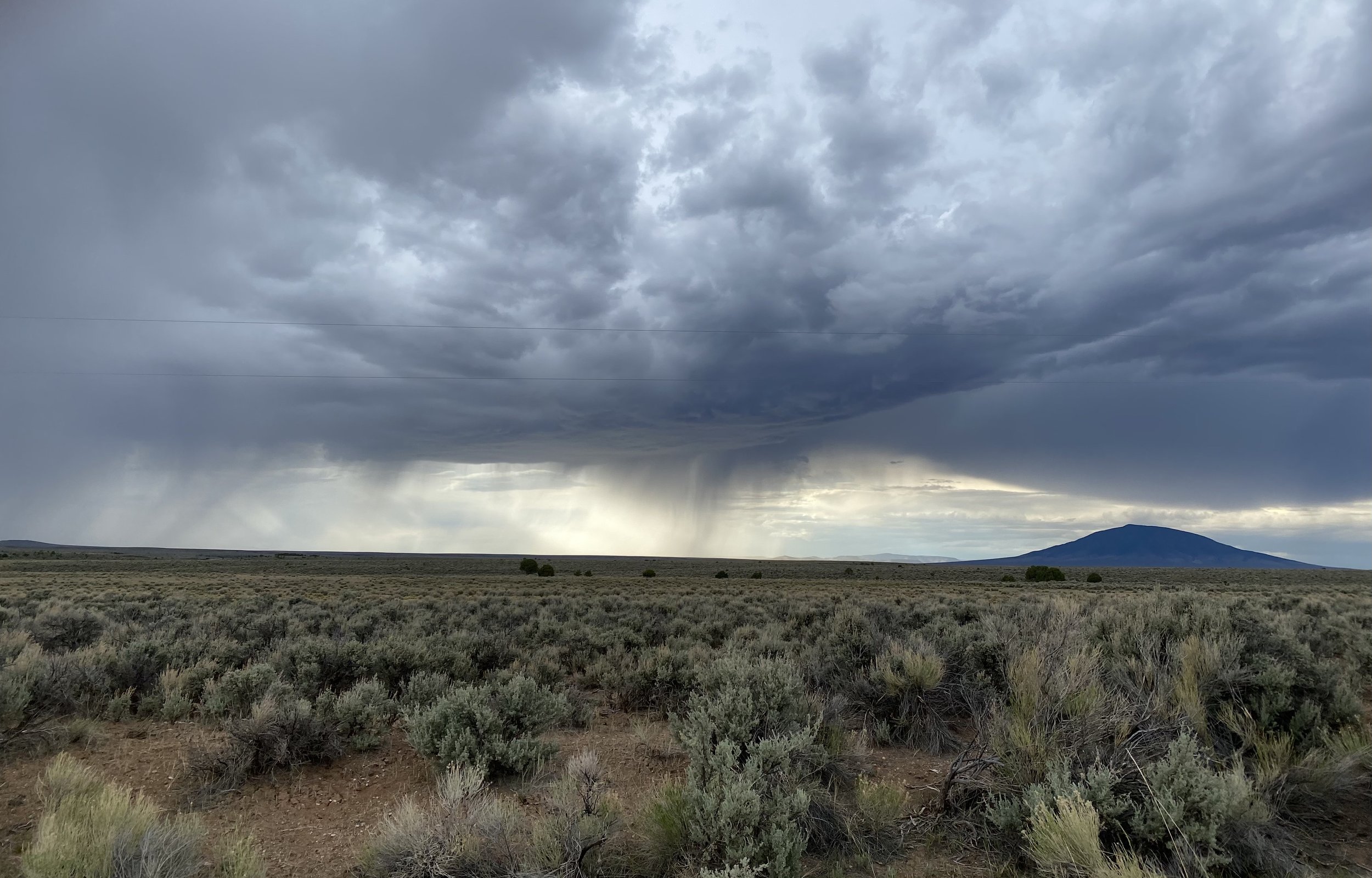
LANL Surface Water
Overview – Surface Water at LANL
Many of the surface waters (rivers and streams) that flow through Los Alamos National Laboratory (LANL) are not meeting water quality standards for contaminants such as gross alpha radiation, heavy metals, and PCBs.
The Individual Storm Water Permit (IP), issued by the federal Environmental Protection Agency (EPA) under the Clean Water Act, controls storm water pollution from more than 400 contaminated sites at LANL.
Sites included in the IP have the potential to release radioactive, toxic and hazardous pollutants into the Río Grande watershed.
PCB contamination at levels thousands of times above the human health standard has been documented in storm water running off of LANL, and at one site at levels as high 40,000 times over the standard.
The cities of Santa Fe and Albuquerque divert Río Grande water for drinking downstream of LANL’s discharges.
IP Requirements:
LANL is required to monitor discharges from all 405 sites covered by the permit and install controls to stop the migration of pollution downstream
The permit requires LANL to establish and maintain a website devoted to the IP. Go to http://www.lanl.gov/ and click on the “Community and Environment Tab” and then on “Individual Permit”.
LANL is required to update Site Discharge Pollution Prevention Plans (SDPPPs), which outline control methods and monitoring for all sites, every year by April 30th. LANL is also required to submit Annual Reports and Compliance Status Reports to EPA. All reports are posted on the IP website.

What is Storm Water?
Storm water runoff occurs when precipitation from rain or snowmelt flows over the ground. Stormwater can pick up debris, chemicals, dirt, and other pollutants and flow into a storm sewer system or directly to a lake, stream, river, or wetland.
Monitoring in and around LANL has shown that urbanized areas (areas that are developed and covered by buildings and pavement) discharge pollution into the Río Grande Watershed. The EPA requires urbanized areas that are shown to contribute to downstream water quality problems obtain permit coverage under the MS4 (Municipal Separate Storm Sewer System) permit program.
In March of 2015 EPA, in response to a petition by New Mexico water advocacy group Amigos Bravos, made a preliminary determination that urban storm water discharges from LANL were causing and/or contributing to water quality exceedences in downstream streams and needed MS4 permit coverage. As of September 2015 a final determination has not been made.
If EPA makes a final determination that MS4 coverage is required, a draft permit will be released for public comment. For more information contact Brent Larsen at EPA at Larsen.Brent@epa.gov.
New Mexico Water Quality Regulations – 20.6.2 NMAC
In November of 2017 the New Mexico Environment Department petitioned the Water Quality Control Commission requesting changes to the state’s water quality regulations as 20.6.2 NMAC. Some of the Environment Department’s proposed changes, like removing the 5-year limit on water quality variances and allowing variances to be issued for the life of a facility, would substantially decrease water protection and public participation opportunities. Other changes proposed by the Environment Department would strengthen water quality standards. CCW submitted comments on their proposed changes.
Communities for Clean Water (CCW) has prepared the following comments on various surface water permits at Los Alamos National Laboratory (LANL).
